
If Sherlock Holmes were to review this play he would name it for what it is: forgery. This play is presented as an original Holmes story, ‘loosely based’ on characters created by Sir Arthur Conan Doyle, author of the Sherlock Holmes series written between 1887 and 1927. While it is quite common to see adaptations and derivative work in theatre, it is problematic when the author (or in this case, publisher) tries to diminish any reference to the original creator, as cited by the copyright notes on page 1 of the script:
The names of the author must appear on a separate line in which no other name appears, immediately beneath the title and of a font size at least 50% as large as the largest letter used in the title of the Play. No person, firm or entity may receive credit larger or more prominent than that accorded the author.
This means that Doyle’s name is largely omitted from having any connection to this play; his name does not appear anywhere on the programme, nor is the work described as an adaptation or inspired by Doyle’s stories, when in fact, it is almost identical to A Scandal in Bohemia, Doyle’s first short story in The Adventures of Sherlock Holmes. In both stories, intimate letters are stolen which could potentially cause a scandal for members of the royal family; an incriminating photograph is threatened to be revealed if the ransom is not paid. The exact same ruse is concocted by Holmes to find out where secret valuables are hidden. Even the dialogue is almost identical, giving Forgette far too much credit for “sounding just like” Doyle.
What is different in Forgette’s play is the addition of Oscar Wilde and Lillie Langtry (aka ‘The Jersey Lily’), an obscure socialite from history who replaces Doyle’s more fascinating creation, Irene Adler, the only woman to have out-witted Sherlock Holmes. Now that would have made an interesting play!
With the forensics out of the way, we can move on to an analysis of this beautiful but uneven production directed by John Grinston.
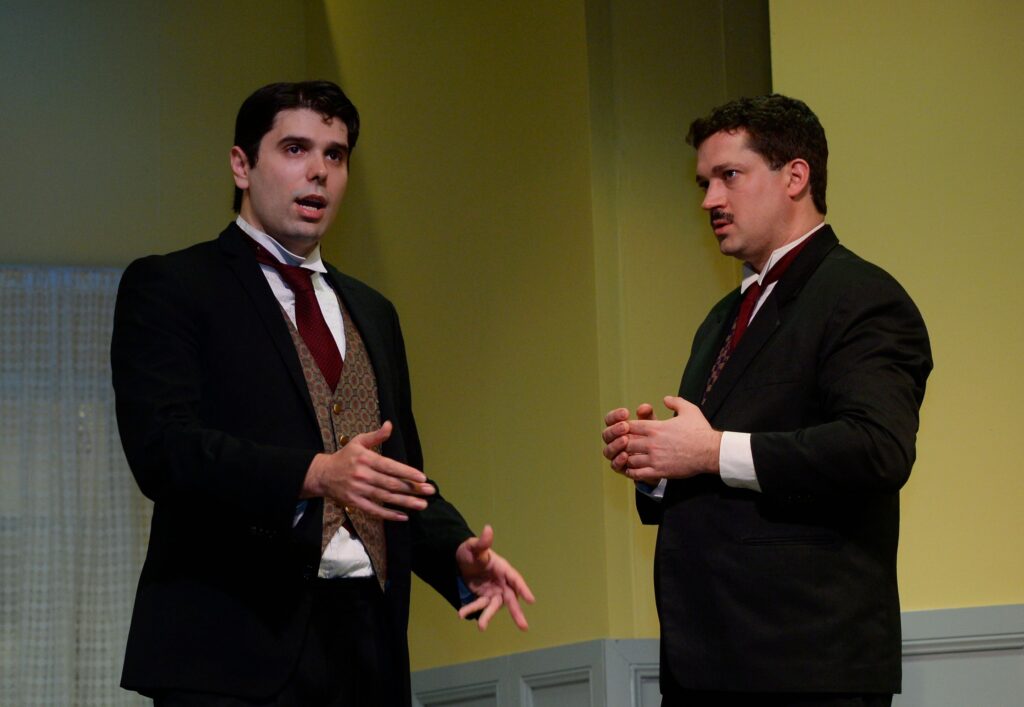
Neilson Brown, is sadly, no Sherlock Holmes. There is no immediacy in the opening scene that he is Holmes, and that perception lingers as he fails to bring any psychological conviction to his character. His eyes, mannerisms, and lumbered speeches are too generalised for a sharp-witted, eccentric character like Holmes. The vocal delivery was crying out for some mellifluousness to break up the monotony of his mansplaining speeches. Also, in Doyle’s stories, Holmes is described by Watson as ‘tweed-suited’ but in this production there’s no hint of that particular style. Brown fares much better when Holmes is in drag, the only time his character becomes remotely interesting, giving us a hint of his unorthodox mind.
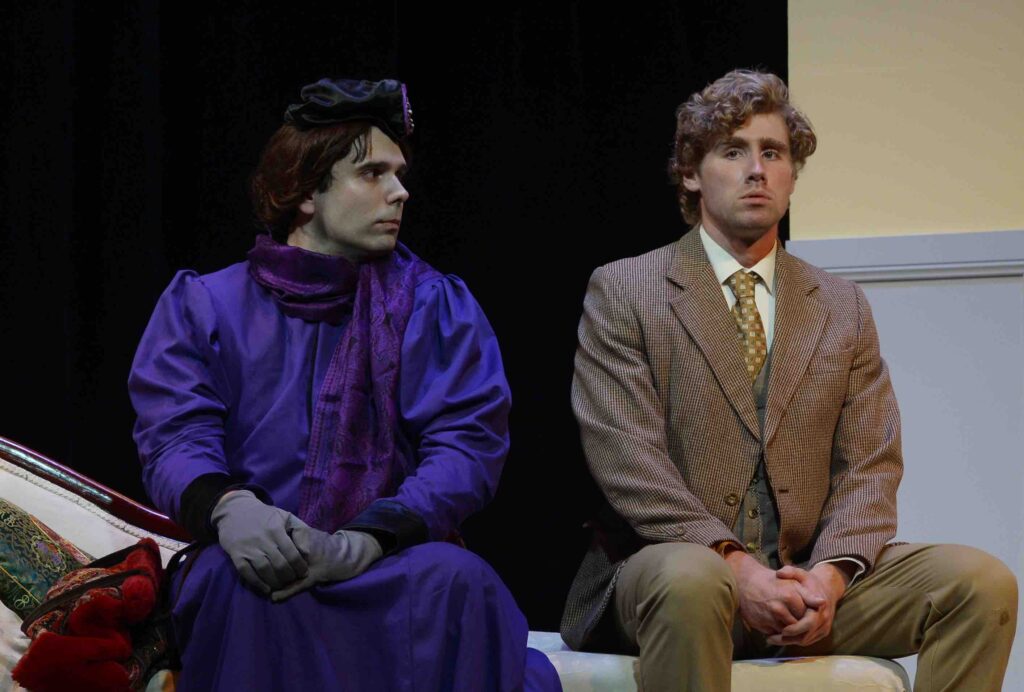
Carlin Hurdis is charming and convincing as Doctor John Watson, but is given very little to do, other than fawn over Lillie Langtry. There was room for more comedy, such as accidentally slipping down a wall or walking into a door when making botched attempts at flattering her. Comedy is always more impactful when punctuated by something unexpected.
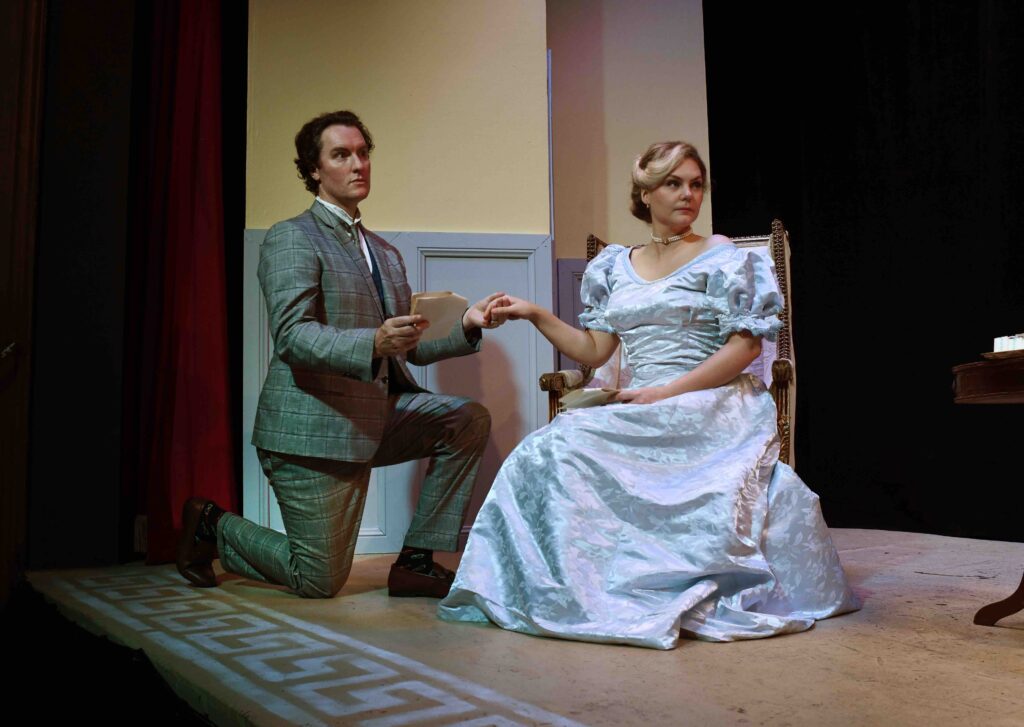
Molly Haddon as Lillie Langtry was a standout performer, bringing intelligence and restraint to her character. She showed great stage presence and confidence while swooning around in beautiful costumes by Susan Carveth.
Nathan Moss as her BFF, Oscar Wilde, also brought spark to his iconic character, master of delivering one liners that got the biggest laughs. Although the script dictates he is not ‘meant to be inferior to Holmes’ he actually ends up upstaging him. The minute he entered on stage, you knew he was Oscar Wilde!
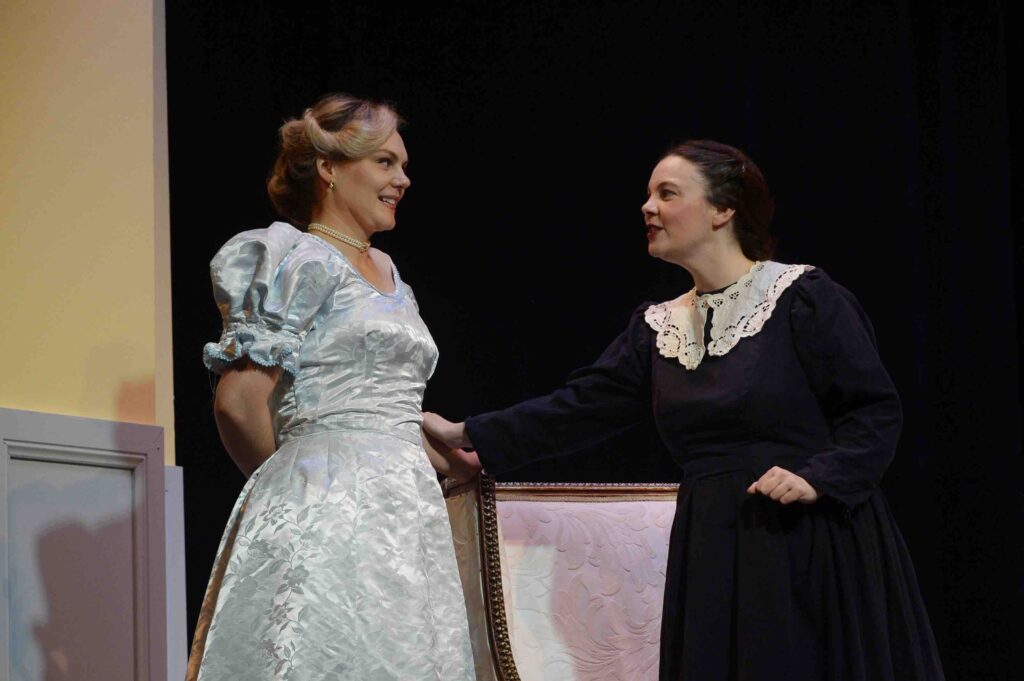
Meg Girdler as Mrs Tory relished playing the duplicitous role of the innocent maid / villainess, the type of role any actress would kill to play, and she nailed it.
Other supporting cast were adequate in their roles, but could have taken their directions a little further to emphasise the action. For example, John Smyth (Liam O’Carroll) as the sympathetic thug is meant to squint at everyone due to his poor eyesight, but we don’t see that happening.
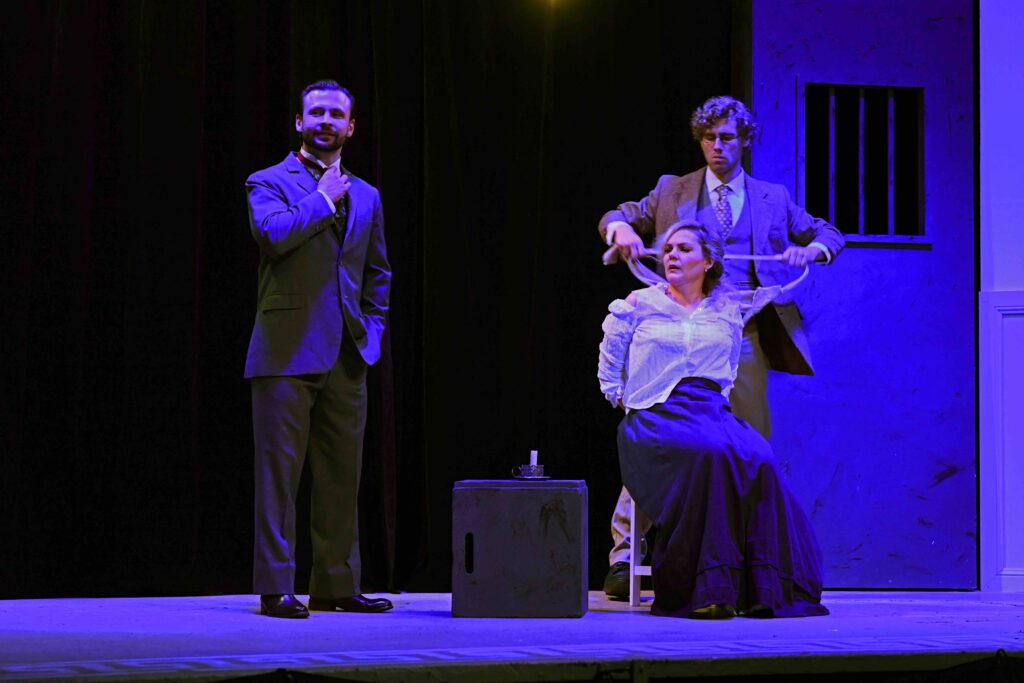
The set design and construction led by Tom Fahy was gorgeous and very detailed, creating rich intricate settings from a sitting room to a dungeon and a lonely dark street at night. Sometimes in theatre, watching the transitions can be as entertaining as the action itself, and it held true in this case.
It’s a shame that smoke was entirely omitted during the ‘fire!’ scene, perhaps for safety reasons, but it made the action in that scene look like something had gone wrong in the performance.
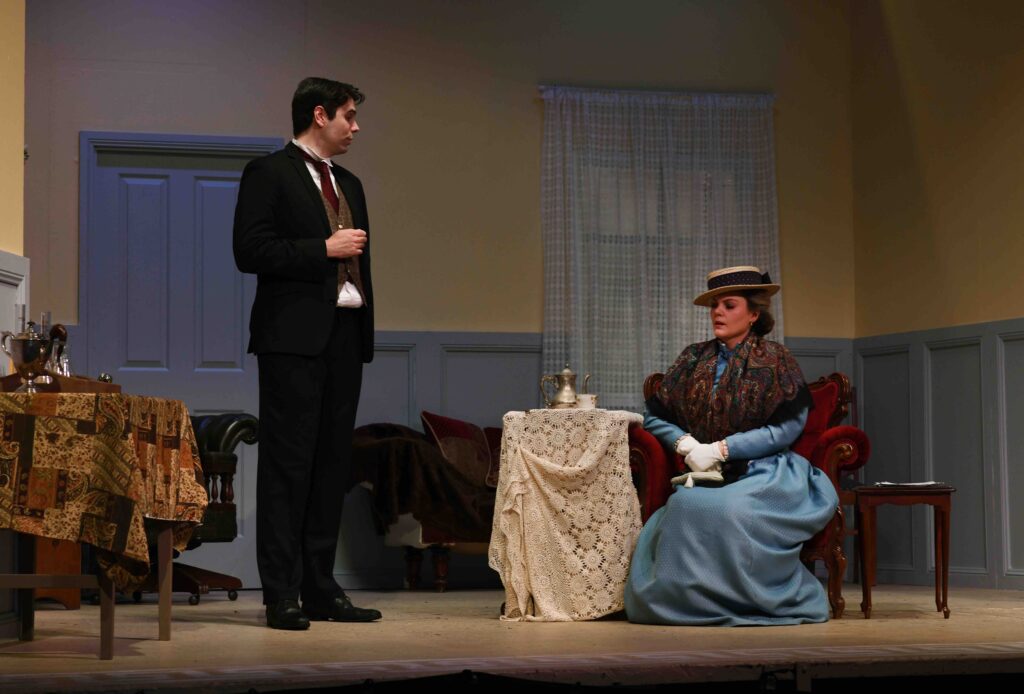
Overall, Sherlock Holmes & the Cast of the Jersey Lily fits in the program we’ve come to expect from the much-loved Genesian Theatre, which will soon be closing down in Kent Street and relocating to Gordon Street in Rozelle. We sincerely hope that Sydney’s rampant appetite for commercial redevelopment does not result in the loss of historical furnishings inside this gorgeous theatre space which has been entertaining audiences since 1945.
Sherlock Holmes & the Case of The Jersey Lily is playing at Genesian Theatre until 10 December 2022. For tickets and showtimes go to https://www.genesiantheatre.com.au/
_____
Images: Craig O’Regan